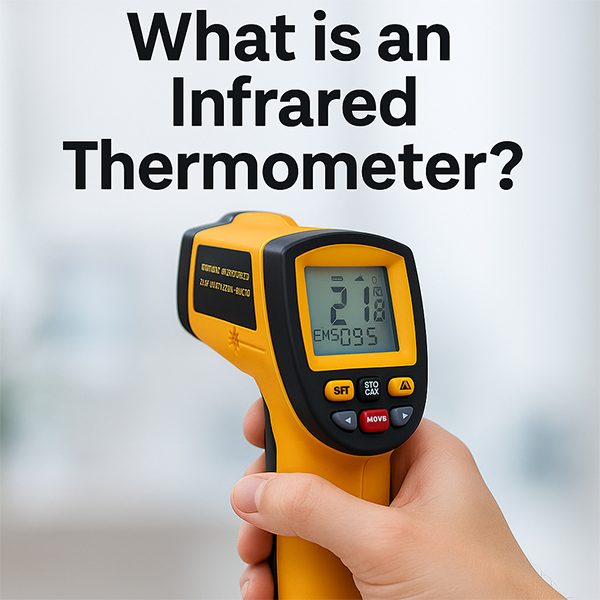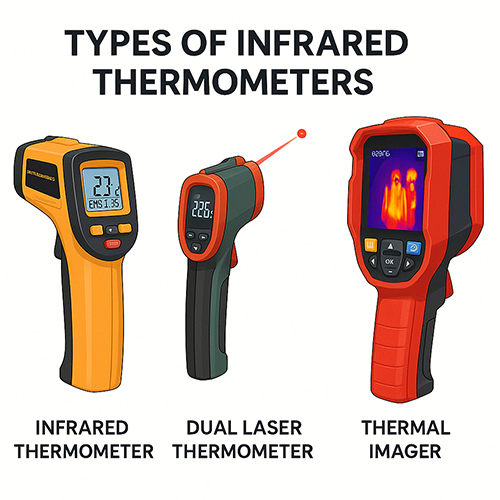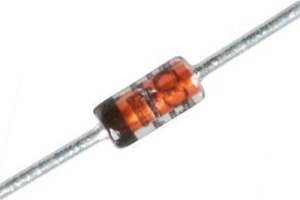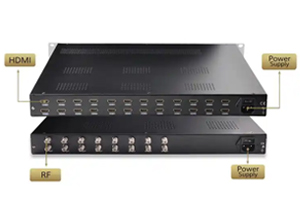Infrared Thermometers Explained: How They Work, Uses, Buying Tips, and Types
Author:admin Date: 2025-07-15 03:30 Views:378
- Introduction
- What is an Infrared Thermometer?
- Key Features of an Infrared Thermometer
- When To Buy an Infrared Thermometer
- How Does an Infrared Thermometer Work?
- Types of Infrared Thermometers
- How To Use an Infrared Thermometer
- Applications of Infrared Thermometers
- Features to Look for When Buying an Infrared Thermometer
- Limitations of Infrared Thermometers
- Infrared Thermometers Care and Maintenance
- Conclusion
Introduction
Thermometers are important in various fields. You are likely to come across them in different applications being used to measure temperature. There are many types of thermometers available, each having a different mechanism for how they work. What is important is that you always pick the right one, depending on the use.Thermometers are important in various fields. You are likely to come across them in different applications being used to measure temperature. There are many types of thermometers available, each having a different mechanism for how they work. What is important is that you always pick the right one, depending on the use.
Today, our focus is on the infrared thermometer. We look at how it works, types, applications, and so much more to give you a better understanding of what an infrared thermometer does. Let us dive in.
What is an Infrared Thermometer?
This type of thermometer measures temperature from a distance by detecting the infrared radiation emitted by objects. It works by focusing the infrared energy onto a built-in detector using a lens. The detector converts the infrared energy into an electrical signal, which is then displayed on a screen as the temperature reading.
The way the infrared laser thermometer works makes it usable for industrial, medical, kitchen, and many other applications, depending on the needs of a user.

Key Features of an Infrared Thermometer
The best infrared thermometer will have the following key features that enable it to work effectively.
- Non-contact measurement: Compared to many other types of thermometers, the infrared thermometer works without getting into contact with the object. It works by simply detecting the infrared radiation the object emits.
- Distance-to-Spot Ratio: This ratio is important as it indicates the relationship between the object whose temperature is being measured and the thermometer. Having a higher ratio means you can measure the temperature of objects from a greater distance.
- Accuracy: This is how close the measured temperature is to the actual temperature. Most infrared thermometers will have an accuracy range of ±1% to ±3%.
- Adjustable Emissivity: This is the measure of how the material can emit infrared radiation. Having adjustable emissivity settings means getting more accurate readings for different surfaces.
- Backlit Display: This is a common feature of most infrared thermometers that makes it easier to read the temperature even in low-light conditions.
- Auto Ranging: This is when the infrared thermometers can adjust the measurement range to suit the temperature of the object being measured.
When To Buy an Infrared Thermometer
What would make someone get the BG Racing infrared thermometer gun? There are various reasons someone might consider getting such a thermometer. This includes:
Safety
Whenever you are dealing with high-temperature objects, hard-to-reach areas, or hazardous materials, using an infrared thermometer gun is better. It allows you to check the temperature readings without a physical touch.
Convenience
If you want to do quick and easy temperature checks, then the infrared thermometers should do the job for you. This is because they offer rapid response time, making them ideal for applications such as cooking, manufacturing, and other similarly paced environments.
Versatility
You can find an infrared thermometer for cooking because useful for other applications such as home repairs, medical temperature checks, and automotive maintenance. This just shows how versatile the infrared thermometer is.
Accuracy
Infrared thermometers are generally accurate in how they measure temperature. When you choose the right thermometer, expect it to deliver on performance most of the time. Well, look at the reviews of a specific model to see how it is rated. Most of them will be accurate for many applications you might have.
How Does an Infrared Thermometer Work?
As already mentioned, infrared thermometers simply work by measuring the temperature of an object by detecting the infrared radiation from the object. All objects with a temperature above absolute zero will emit infrared radiation. The hotter the object, the more infrared radiation it will emit.
The Fluke infrared thermometer uses a lens to focus the infrared radiation from an object onto a detector. The detector in this case is often a thermopile, which converts the radiation into heat and then into an electrical signal. The electrical signal produced is directly proportional to the intensity of the radiation, which now shows the object’s temperature.
The thermometer has a temperature display where the electrical signal is displayed in a way you can understand.
Types of Infrared Thermometers
You may have come across an infrared cooking thermometer, but there are broader ways to categorize these thermometers. This includes spot infrared thermometers, infrared scanning systems, and infrared thermal imaging cameras.
Spot infrared thermometers are the most common type and can measure temperature at a single point on a surface. They are often designed to be handheld and used for quick temperature checks. Examples include medical thermometers, infrared food thermometers, and more.
Infrared scanning systems are designed to contain a spot thermometer with a rotating mirror. This makes it easier to scan a wider area. You should expect them in industrial applications, such as on conveyor systems, for monitoring the temperature of materials.
Infrared thermal imaging cameras are more sophisticated compared to the other types. They can easily measure the temperatures across multiple points. The result is a thermal image or thermogram. They are built with hardware and software important for producing a detailed heat map.

How To Use an Infrared Thermometer
Using the best infrared laser thermometer is quite easy. Here is how you would do it.
- Power on the infrared thermometer.
- Select the mode if available. Some thermometers will have modes for body, surface, and more. Choose the right one depending on the application.
- Position the thermometer correctly. For body temperature, simply point at the forehead and keep it at a few centimeters from the skin. If it is a surface thermometer, point it at the object you need to measure the temperature to get the reading.
- Take the reading by pressing and holding the trigger while aiming the thermometer at the target object. It does not take long before the temperature is displayed on the screen.
- Go ahead and interpret the reading. Let’s say you were measuring body temperature; seeing red on the display may indicate a fever. It all depends on the manufacturer’s instructions on the specific color codes for temperature ranges.

Applications of Infrared Thermometers
Infrared thermometers will have many applications. Such includes:
- Healthcare for fever screening, neonatal care, and continuous patient monitoring
- Industrial applications for equipment maintenance, process monitoring, quality control, asphalt paving, and more.
- Everyday life, such as cooking, automotive, home maintenance, and research and development
Features to Look for When Buying an Infrared Thermometer
Whether you want an infrared kitchen thermometer or one for hospitals, there are several factors to keep in mind before buying one. Here is what to consider:
Temperature Range
It is important to choose a thermometer whose temperature range can cover what you will be measuring. For example, general-use thermometers need a range of -50°C to 500°C, which should be sufficient. However, some applications might need a wider range.
Distance-to-Spot Ratio
This is an important ratio that indicates the size of the measurement area. We recommend getting an infrared thermometer with a higher ratio so that you can even measure smaller areas, but from a great distance.
Emissivity
The best digital infrared thermometer will have adjustable emissivity, which is crucial for accurate readings on different surfaces. Most thermometers will have a standard emissivity of around 0.95 as the common calibration. However, being able to adjust emissivity ensures you get accurate temperature readings for different materials.
Laser Targeting
You may also come across laser targeting functionality in some infrared thermometers. Having a laser allows for accurate targeting of a point on the surface to get accurate readings. Some models offer the option of a dual laser or circular laser to indicate the temperature more precisely.
Display
The display of the infrared thermometer should be clear and easy to read. This allows for quickly obtaining the temperature readings. Look for models with backlighting for low light conditions, and also allows for conversion, or shows both Celsius and Fahrenheit.
Durability
Different applications may demand different durability. We always recommend going for a highly durable and stable thermometer that can handle demanding environments. Look for a model that maintains accuracy and calibration over time.
Accuracy
Get yourself a thermometer built to offer high accuracy. Having an accuracy of 2% or lower will always leave you with reliable readings. It is best to compare the infrared thermometer readings with those of a contact thermometer to help verify accuracy.
Limitations of Infrared Thermometers
- The infrared thermometer sensor can only measure the infrared radiation emitted from a surface and not the internal temperature of an object.
- Some models do not have the option of adjusting emissivity. This can mean that the temperature reading will be inaccurate. Reflective surfaces may be problematic in such cases.
- Ambient conditions such as dust, fog, direct sunlight, and steam can interfere with the infrared radiation and affect readings.
- The distance between the target and the thermometer may affect the measurement area size. Having a larger field of view may reduce the infrared thermometer’s accuracy when trying to measure the temperature of small objects.
- Transparent materials such as glass may distort the readings, leading to inaccurate measurement.
Infrared Thermometers Care and Maintenance
There are a couple of things you can do to ensure the infrared thermometer remains in good working condition.
First, clean the lens. Use a soft cloth or cotton swab that is slightly dampened with medical alcohol or water to clean the lens. For the body, gently wipe it with a dampened cloth. Never submerge the thermometer in a liquid for cleaning purposes.
How you store the infrared thermometer is important. Make sure to avoid storing it in extreme heat or cold. Always keep the thermometer dry and away from liquids, humidity, and moisture while storing it.
As for handling, protect the thermometer from drops and shocks. Such may affect its accuracy. Consider using a lanyard to prevent accidental drops. Also, understand the distance-to-target ratio to ensure you get accurate readings.
Regular inspection to check for signs of damage can help ensure you have a great working thermometer.
Conclusion
An infrared laser thermometer gun works using a very simple principle. This is what has made such thermometers more popular. Ease of use also means that anyone can use it for different applications and quickly interpret the temperature readings. That is why you will come across this type of thermometer in many fields. As always, taking good care of the thermometer will ensure you always get accurate readings; thus, we have shared the care tips above.
Please send RFQ , we will respond immediately.
Frequently Asked Questions
Are infrared thermometers accurate?
Yes, when you use them correctly. The accuracy of such thermometers largely depends on the surface conditions, emissivity settings, and distance-to-spot ratio.
Can infrared thermometers be used to measure body temperature?
Yes, it is possible to do so. However, make sure you are using one designed for such an application. This will help read the body temperature accurately. We recommend using the infrared thermometer as per the manufacturer’s instructions for reliable results.
Can you use infrared thermometers for measuring internal temperatures?
No. The infrared thermometers are designed to only measure the surface temperatures. In case you want to measure internal temperatures for applications such as food, a probe thermometer does a better job.


